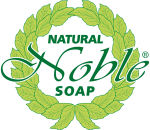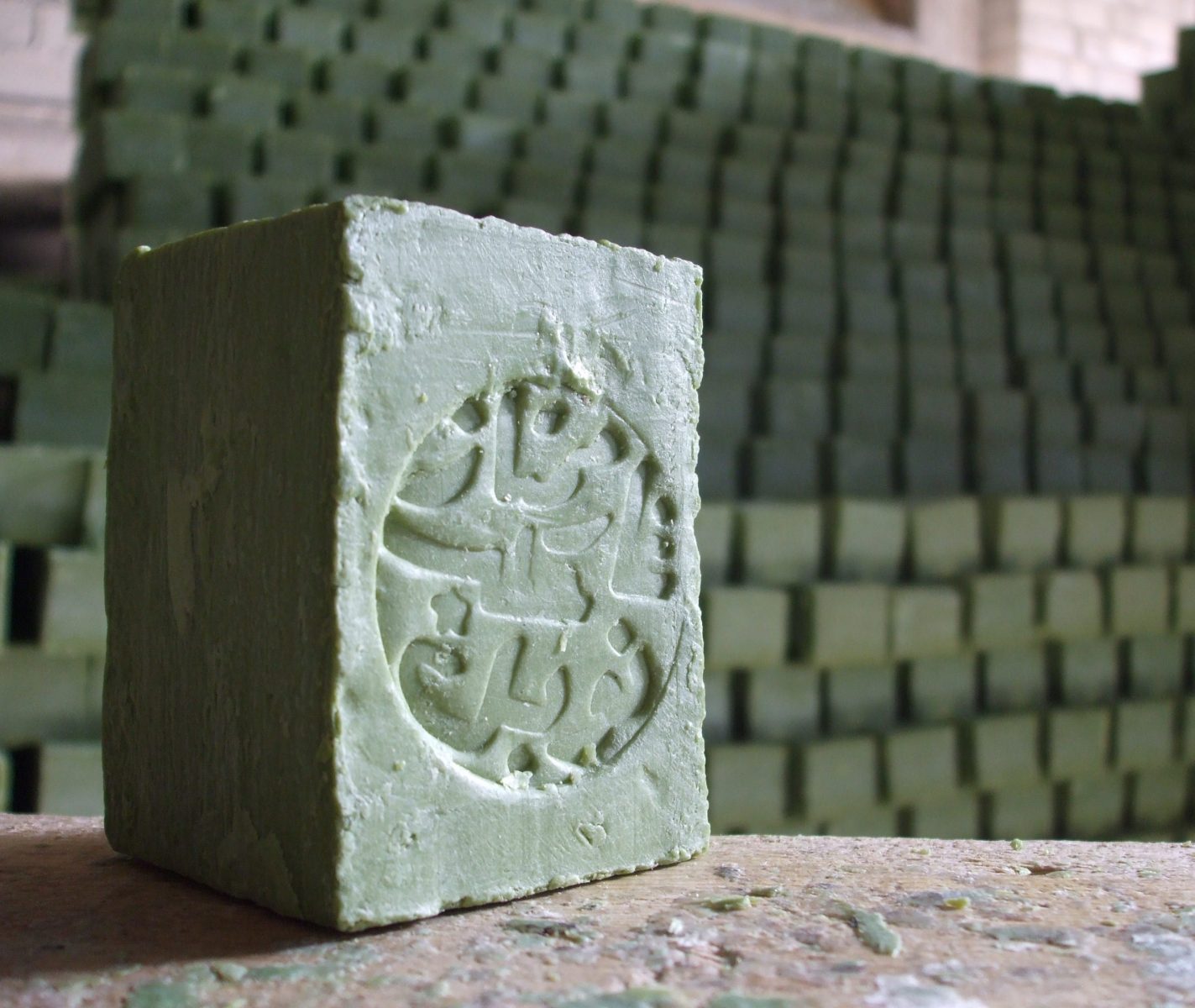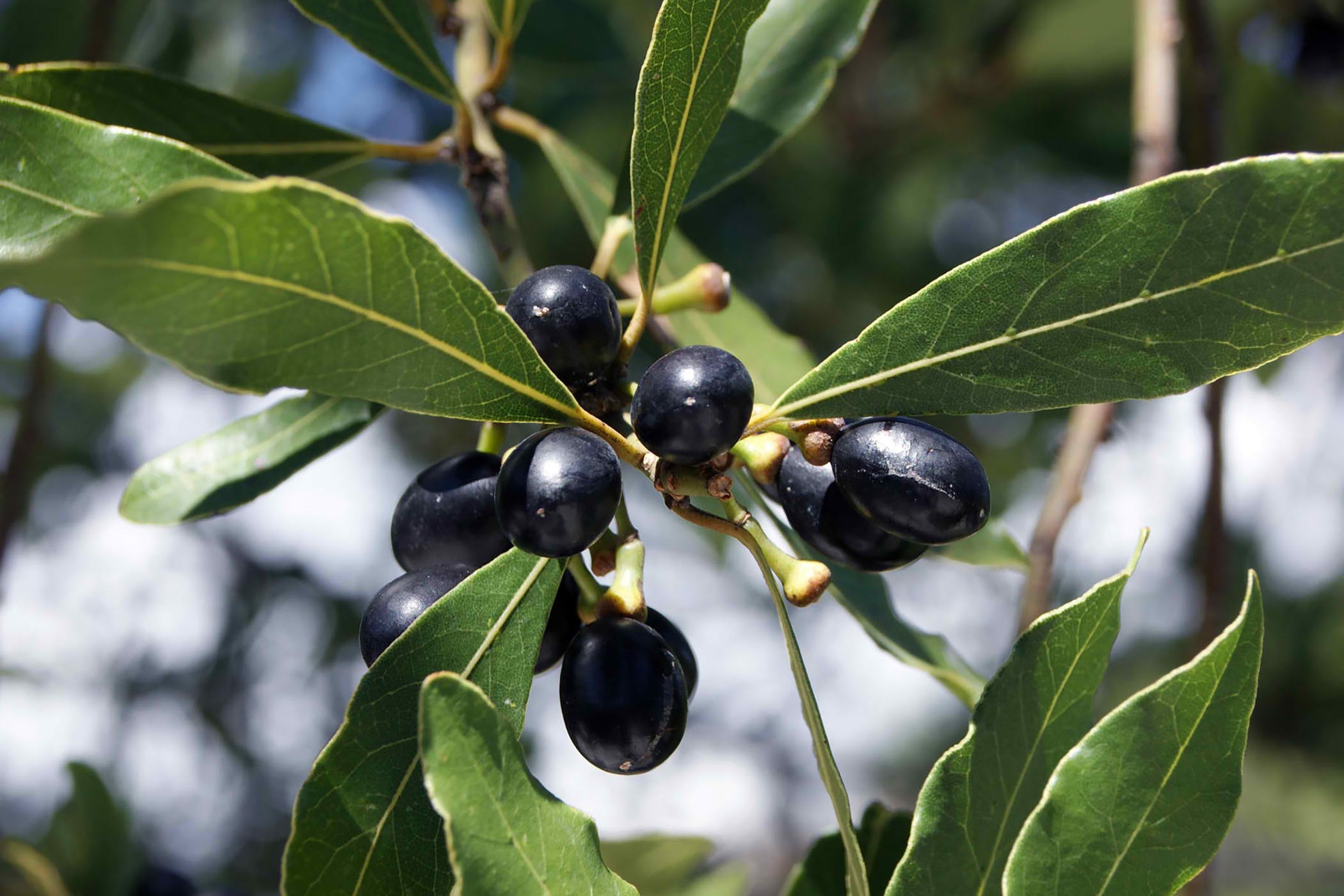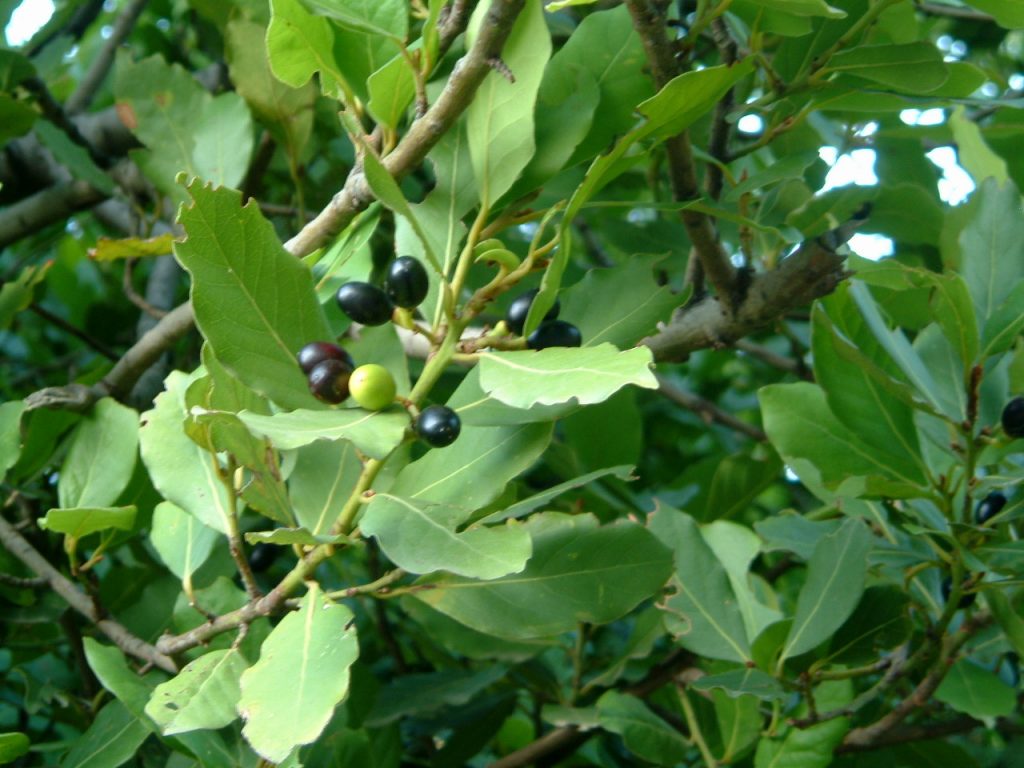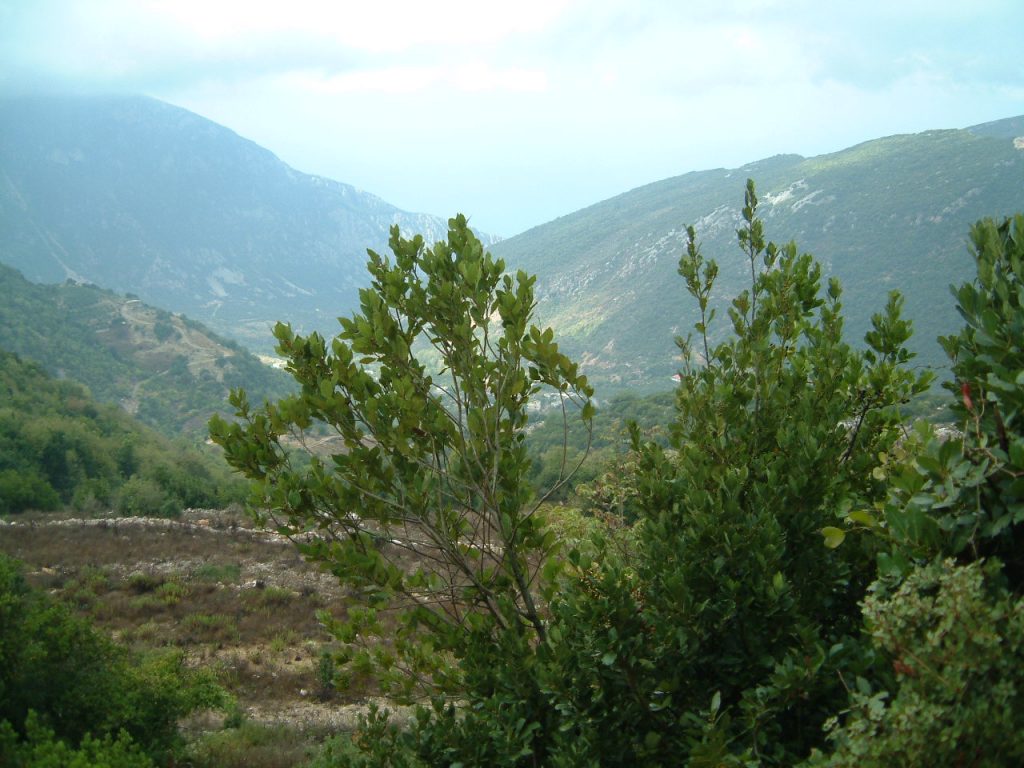More than 4,000 years ago, ancient Syrians began a production ritual that set the ground rule for beauty and hygiene products as we know them today: Aleppo soap. Even now, this great name stands for the very tradition of the original soap making procedure, as well as the outstanding refreshing, healing and cleansing properties found in its all-natural ingredients: olive oil, laurel oil and water.
The Natural Handmade soap made from olive and laurel oils is called “Ghar” which means in arabic language “Laurel”. Its history traces back to the Syrian city of Aleppo. This is why it is known internationally as “Aleppo soap”. Aleppo soap is considered to be the forefather of all hard bar soaps which exist today in their many different forms and varieties throughout the world. It actually could be considered one of the oldest cleansing and skin care products.
“Ghar” Soap is a vegan ecological circular product and has had a magnificent skincare and Environmental positive impact as a natural antibacterial soap, thanks to it’s Beneficial oils properties and authentic production rituals.
The traditional manufacturing of this product remained in Aleppo and its surrounding. Although discovered around 2,400 BC, this all-natural soap is still made in the same style, using that have barely changed since the very beginning. Soap-making is a skilled and deep-rooted craft that is dependent upon its quality ingredients, expert artisans and extreme attentiveness during the phases of production in order to manufacture quality soap.
Both in antiquity and today, Aleppo soap is made from natural components mix of olive and laurel oil which take care of the skin and keep it in hygienic and balanced. The pure oils act beneficially on sensitive and weary skin and thereby this soap is suited for use as a soft cleanser even on damaged skin or by those suffering from conditions such as eczema and psoriasis.
PREPERATION
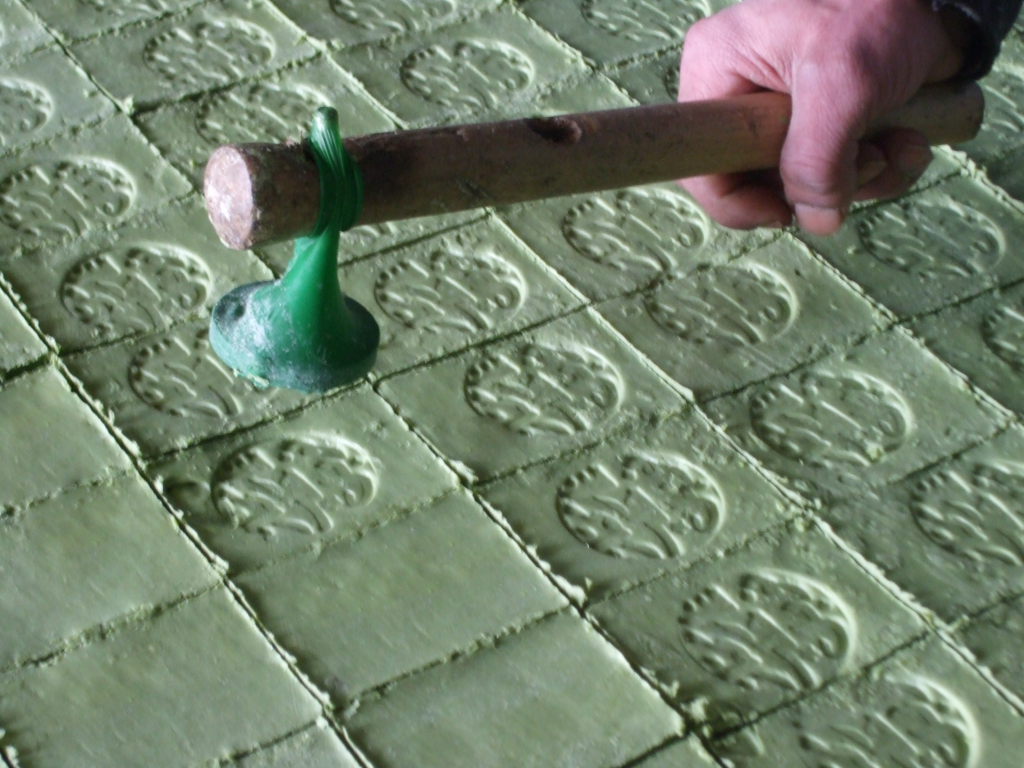
The production of Aleppo soap is limited to the cold months from December to March, after the olive harvest. It is still made in the same simple way that it always was; by cooking the olive oil and adding the desired amount of laurel oil. The amount of laurel oil will later determine the value and price of the soap. The quality, however, depends on all of the ingredients collectively, as well as, the manufacturing process.
In more detail, the procedure is as follows:
- Olive oil is poured into a special vessel and mixed with sodium carbonate. The sodium carbonate originates from certain desert plants. This mixture is then heated to almost 200℃. Continuous movement allows from the breaking down of the oil and the release of the glycerin. This process is called saponification and happens prior to the laurel oil being added.
- Subsequently, the mixture is poured into a basin where it is left to chill and harden, in order for the soap’s elements to properly bond together. When the basins are newly filled with the liquid, shiny, silky soap, they are reminiscent of swimming pools full of sappy green.
- Once the soap is congealed and becomes more firm, it is cut by hand with special tools. Now, each individual bar of soap receives a signet by hand with a metal stamp. Now the soap bars are ready to be stored to dry.
- The bars are stacked, one over the other, always leaving space between ear bar to encourage air circulation throughout the chamber so that each piece of soap dries well on all sides. This process takes 8 to 12 months.
As a natural bar soap, the color will begin to gradually change from an intense grassy green to a light yellow and then a golden brown. The inside of the soap, however, remains green. The thickness of the yellow surface indicates the age of the soap. Cutting the soap with reveal its age and original color.
ALEPPO SOAP BENEFITS
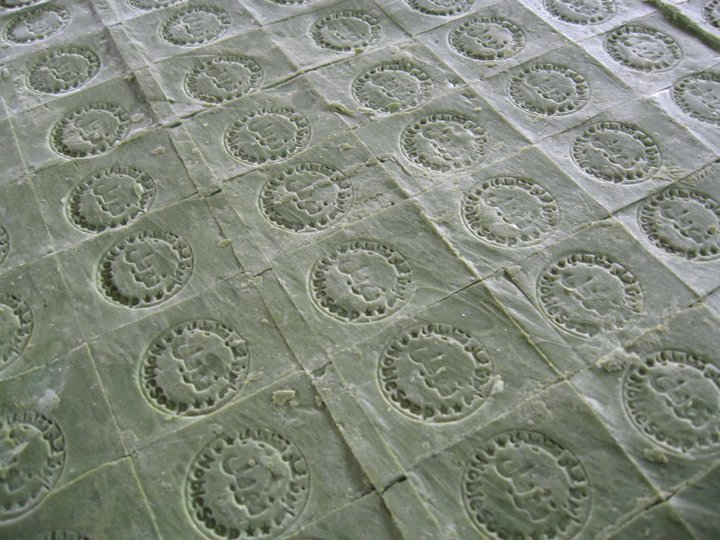
Aleppo soap is nourishing, refreshing and protective for skin of all ages and various characteristics. That is why the number of people interested in Aleppo soap has been growing around the globe. The soap may be use for hands or body wash, in addition to facial cleansing. As well, it may be used in the shower in place of a shower gel or even shampoo. It is also a good addition to a hammam or sauna since it is a multipurpose cleanser suited for sensitive skin and skin conditions like dandruff, eczema, fungal infections and blemishes.
Aleppo soap helps with its pure herbal oils:
Laurel oil is known for its antiseptic qualities. All skin types benefit from its refreshing effect and its natural ability to activate blood circulation. It also aids with the healing of wounds and has antifungal properties in the case of damaged skin.
Olive oil softens and protects the skin while providing penetrating moisture due to its large amount of natural glycerin. At the same time, olive oil has the ability to protect the skin from outside influences, even sunlight. Olive oil also contains many antioxidants which help the skin detox and supports cell regeneration keeping the skin young and fresh.
Overall, this totally natural soap can be used by all regardless of age or skin type, which explains its popularity. Even when used with very hard water, Aleppo soap is extremely effective in its cleansing capabilities.
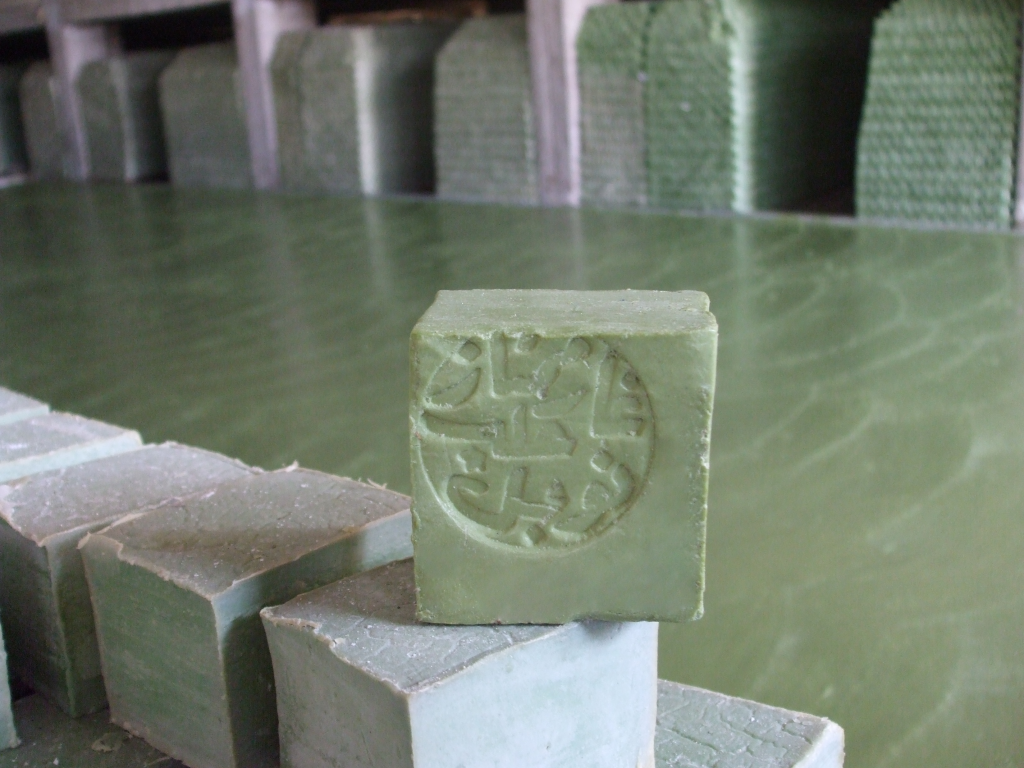
ADVANTAGES OF NOBLE ALEPPO SOAP
On our skin there are many microscopic beneficial bacteria that are vitall for our health. Our skin provides an ideal environment for the reproduction of these microbes. In turn, these microbes protect the skin from foreign influences, which is why they are called beneficial bacteria. As well, beneficial bacteria strengthen and promote our epidermal immune system by provoking an immune reaction while being all-in-all harmless to our bodies.
By washing our skin with aggressive cleaning agents, we not only remove all kinds of germs from the skin, but we also disturb the natural acidic nature of the skin which had been promoting the growth of the resident helpful germs. Since the nutrient source of the beneficial bacteria has been disturbed, it is difficult for them to recolonise and protect the skin from harmful germs.
Speaking about Noble Aleppo Soap Benefits should start by addressing the fact that Noble Aleppo soap Contains and only olive and laurel oils besides to water and according to the aunitic production ritual of Aleppo city any other use for any other vegetable oil is considered to be out of the tradition production ritual.
Nevertheless when using vegetable oils for washing, bacteria will still be washed off, but the oily acids of the herbal oils will be beneficial for the regrowth of beneficial microbes as the herbal oils are a good food source for these crucial bacterial so that the microorganisms can quickly multiply and coverthe skin, thus helping the skin to regain its natural mild acidity.
And when using Noble Aleppo Soap we are treating the skin with the nutritious olive oil that support healthy skin cell function and a good moisture balance, making the skin smooth with a soft, tender, pleasant feeling. And the laurel oil will be the the refresher and the natural anti bacterial cleanser.
